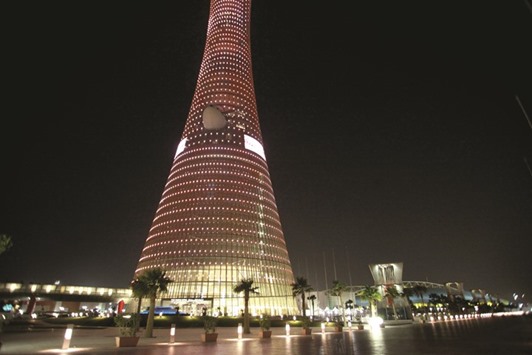Qatar may see a sustained 3.6% average growth during 2016-18 mainly powered by non-hydrocarbon sectors, even as its key medium term risk is the persisting lower global oil and gas prices as well as intensifying competition in the gas market, according to Mena (Middle East and North Africa) Economic Monitor Report - Spring 2016.
“The outlook for economic growth remains moderate, despite the slowdown in the hydrocarbon sector,” said the report, which supplements the World Bank’s bi-annual Mena quarterly economic brief.
The hydrocarbon sector has been suffering both from stagnating production since 2012 (largely due to the self-imposed moratorium on additional production from the North Field), and from plummeting oil and gas prices since mid-2014.
Non-hydrocarbon growth, however, may be slower than in previous years due to a reduction in manufacturing growth as the push from the expansion of the fertilisers and petrochemicals sectors fades.
Services (real estate, transport, communications, and business services) are projected to contribute the bulk of GDP (gross domestic product) growth over the forecast period, although these sectors will grow at a slower rate than in the past as population growth decelerates and fiscal spending is reined in.
“The fiscal and current account balances will deteriorate in 2016 before starting to recover over the following two years,” it said, adding oil production will decline as lower prices discourage investment in maturing fields.
Conversely, gas production will increase as the Barzan gas project comes on stream (2016) and expands (2017). As gas production increases and oil and gas prices recover, hydrocarbon exports will experience sizeable growth, it said.
Although the government is tightening fiscal policy with the announced 2016 budget showing a decline in both current and capital spending and resulting in a total budget of QR202.5bn against QR218.4bn in the previous year; the report said “the investment commitments for the FIFA World Cup 2022 and its plan to diversify the economy, have limited its ability to reduce capital spending.”
Highlighting that the main medium-term risk for the economy is the persistence of the sharp drop in global oil and gas prices, in addition to intensifying competition in the gas market; the report said continued weakness in oil markets could adversely impact hydrocarbon revenues, economic growth, and financial sector health. Increasing gas market competition in the medium term may further weaken growth.
The Mena Economic Monitor said Qatar is starting to remove subsidies and has raised domestic fuel prices by 30% in January and further, it is developing new sources, including through planning for the implementation of a value-added tax with other Gulf countries.
Finding that monetary policy has been accommodative and the banking sector continues to grow, albeit at a slower rate; it said Qatar Central Bank chose not to mirror the US Federal Reserve’s raising of the policy rate in December 2015.
However, in order to maintain the currency peg to the US dollar, Qatar will need to follow suit if the Fed continues to tighten monetary policy, the report said.
The commercial banks have adequate liquidity and deposit growth reached 8.2% in 2015. This deposit growth, however, is slow compared to previous years (19.7% in 2013 and 9.6% in 2014) due to the decline in public sector deposits.

The Aspire Tower stands illuminated at night in Doha. The outlook for Qatar’s economic growth remains moderate, despite slowdown in the hydrocarbon sector, according to Middle East and North Africa Economic Monitor Report - Spring 2016.
